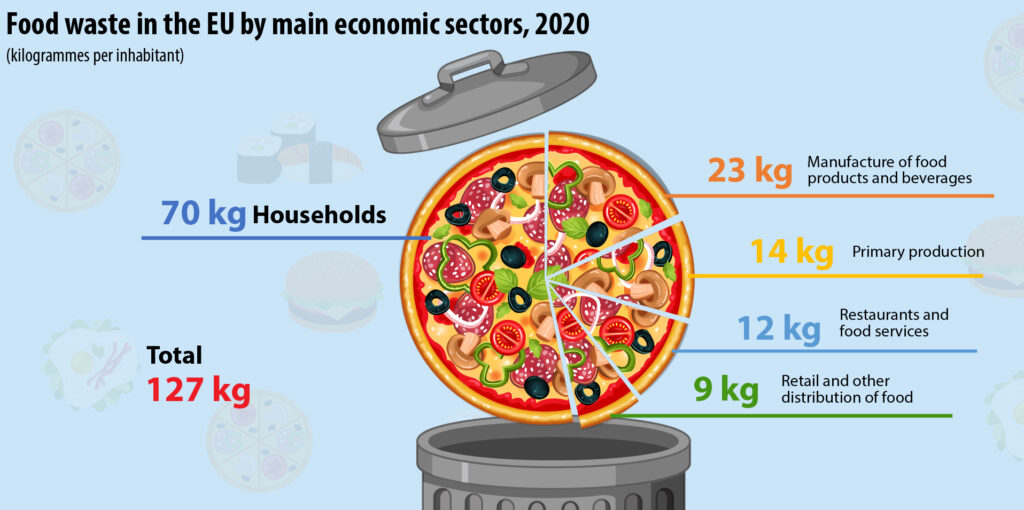Normanton, UK: The packaging industry must play its part in cutting food waste in 2023, says Parkside Flexibles.
The call is in response to a study by Eurostat, the EU statistical office, that found that 127kg of food per person was wasted every year in Europe, with households accounting for 55% of that waste.
The other 45% was generated throughout the supply chain, including through the manufacture, processing, and distribution of food products.
Tackling consumer food waste remains a challenge both in the EU and globally, Eurostat says. Household food waste is nearly twice the amount of food waste arising from the sectors of primary production and manufacture of food products and beverages (14kg and 23kg per inhabitant; 11% and 18%, respectively), sectors in which strategies exist for reducing food waste, for instance with the use of discarded parts as by-products, Eurostat said.
Restaurants and food services accounted for 12 kg of food waste per person (9%), while retail and other distribution of food was the sector with the least amount of food waste (9 kg; 7%); however, the impact of the COVID-19 lockdowns on these two sectors is still being analysed, Eurostat said.
“The food industry must not lose sight of the fact that packaging’s primary role is to prevent waste, not to generate it,” Joshua Swann, head of technical, Parkside said.
“The drive to use more sustainable substrates is vital, but any packaging solution must be fit for purpose to protect and preserve food products through the supply chain. At a time when supply chains are still stretched and costs are rising, finding the right packaging solution is more important now than it has ever been,” he said.

“Through innovation driven by evolving consumer behaviour and legislation, the packaging industry has a huge part to play in the fight against food waste.”
“For example, now PP recycling infrastructure is more common, this opens the door for innovation using techniques such as metallisation, and so on – capitalising on the fact that PP is a more functional monopolymer than PE and PET,” Swann said.
He also points to advances in the functionality of flexible packaging, which can protect food while using less material than tray and carton solutions, and compostable packaging for certain food applications.
“Low-plastic, plastic-free, and compostable flexible solutions are at a point where they can be hermetically sealed and cope with the rigours of a modern packing line as effectively as plastic,” he added. “However, it’s important to remember there is no one-size-fits-all solution, with soft fruits having very different requirements from frozen meats, for example. And, of course, packaging still needs to look appealing, as unsold food also contributes to the global waste problem.
“Some good news is that food waste is falling, but there is still a long way to go. We’re dedicated to helping food brands cut waste at Parkside, while employing material reduction and replacement, recycling, or renewable and reusable packaging to find the optimal solution for any application,” Swann said.








